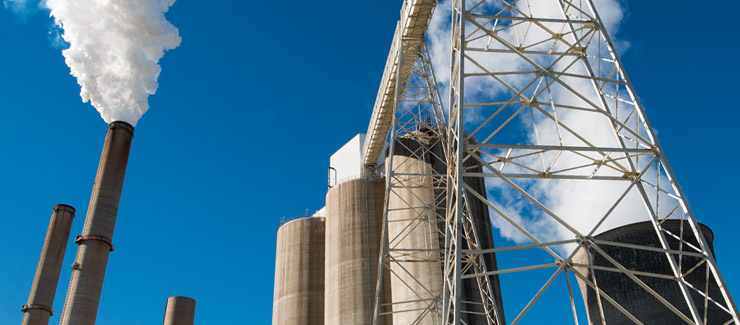 NETL’s expertise in Fossil Energy allows the energy analysis team to focus on these technological, economical, and environmental areas in the development of baseline studies, life cycle analyses, analytical tools, and quality guidelines. NETL analysts use economic models to forecast the market penetration of advanced energy systems for a variety of possible futures. The associated benefits are quantified in terms of reduced cost of energy, reduced environmental impacts, and improved energy security.
NETL’s expertise in Fossil Energy allows the energy analysis team to focus on these technological, economical, and environmental areas in the development of baseline studies, life cycle analyses, analytical tools, and quality guidelines. NETL analysts use economic models to forecast the market penetration of advanced energy systems for a variety of possible futures. The associated benefits are quantified in terms of reduced cost of energy, reduced environmental impacts, and improved energy security.
Power Plants
Power generation analyses examines technology areas in terms of potential costs, benefits, risks, uncertainties, and timeframes.
Coal Combustion Power Plants
The majority of today’s coal-fueled power generation fleet is comprised of pulverized coal (PC) combustion power plants. Within this type of power plant, coal is initially crushed or pulverized to the consistency of talcum powder. The pulverized coal is then blown into a steam boiler with fresh air, where it combusts to produce heat. This heat is used to raise steam within boiler tubes which are built into the perimeter of the boiler walls. The thermal energy of the produced steam is converted to electricity by way of a steam Rankine cycle. The types of PC plants are typically segregated by the quality of the steam, in terms of temperature and pressure, that they produce: subcritical, supercritical (SC), ultra-supercritical (USC - the state-of-the-art), and advanced ultra-supercritical (AUSC).
Coal Gasification Power Plants
Coal gasification-based power plants, such as integrated gasification combined cycle (IGCC) and integrated gasification fuel cell (IGFC) plants, rely upon gasification of coal to produce synthesis gas (syngas) which is then utilized to produce electrical power via combinations of power generation technologies. A typical IGCC plant utilizes a gas turbines in combination with a steam Rankine bottoming cycle. An IGFC plant utilizes a solid oxide fuel cell SOFC) in combination with a steam Rankine bottoming cycle.
Natural Gas Based Power Plants
Utility-scale natural gas-based power plants are typically configured as natural gas combined cycles (NGCC). Natural gas is combusted in a gas turbine, which drives a generator to produce electrical power. The gas turbine exhaust (flue gas) exits the turbine at nearly atmospheric pressure and relatively-high temperature. The heat available in the hot flue gas is used to raise steam in a heat recovery steam generator (HRSG). Flue gas leaving the HRSG is at conditions required for emission to the stack. Steam from the HRSG is used in a steam Rankine bottoming cycle for additional electrical power production.
ECONOMICS
Analyses that assess the potential impacts on the economy from energy technology options and the economic opportunities of these technologies
Jobs/Employment
Economic analyses that assess: jobs creation, workforce development needs, manufacturing costs, supply-chain constraints, and innovation opportunities.
Market Analysis
Analyses of energy industry trends including market and policy drivers and future outlook to identify potential opportunities and challenges to building and maintaining US competitiveness in the global energy market.
Fuel Supply & Prices
Analyses of energy industry trends including the cost, and price trends of resources.
ENVIRONMENT
Analysis of options to mitigate global climate change and improve environmental performance.
GHG Mitigation
Analyses of technologies, policies or strategies to reduce greenhouse gas (GHG) emissions.
Environment (Non-GHG)
Analyses of technologies, policies or strategies to reduce the non-GHG environmental impact of fossil fuel utilization, including water, air emissions and land use.
ENERGY INFRASTRUCTURE
Integrated Energy Systems Infrastructure analyses evaluate options for generation, transmission, distribution, and consumption of electricity considering the value of electric power to industry, consumers, and society.
Energy Security
Analyses of energy technology and resource options which enhance the uninterrupted availability of energy sources at an affordable price.
Grid Reliability
Analyses of optimized electric power system design and operation to assist government, the power industry, and consumers in making informed infrastructure-related decisions.
Fossil Fuel Extraction/Refining
Analyses of new technologies that facilitate fossil fuel extraction and/or refining. Examples include the advancements in the utilization of captured CO2 for enhanced recovery of oil and coal-to-liquids and gas-to-liquids technology research.
Non-power Products/Co-products
Analysis of the production and utilization of non-power products from fossil fuel use including their marketability and financial competitiveness.
Energy Storage, Transmission, and Distribution
Studies involve analyzing the interdependencies of energy transport systems with other critical infrastructures, particularly the water infrastructure.
Other Energy (Non-FE)
Analyses of non-fossil energy technologies and resources.




 NETL’s expertise in Fossil Energy allows the energy analysis team to focus on these technological, economical, and environmental areas in the development of baseline studies, life cycle analyses, analytical tools, and quality guidelines. NETL analysts use economic models to forecast the market penetration of advanced energy systems for a variety of possible futures. The associated benefits are quantified in terms of reduced cost of energy, reduced environmental impacts, and improved energy security.
NETL’s expertise in Fossil Energy allows the energy analysis team to focus on these technological, economical, and environmental areas in the development of baseline studies, life cycle analyses, analytical tools, and quality guidelines. NETL analysts use economic models to forecast the market penetration of advanced energy systems for a variety of possible futures. The associated benefits are quantified in terms of reduced cost of energy, reduced environmental impacts, and improved energy security.